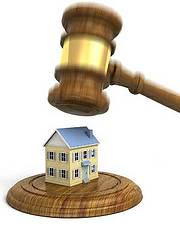Foreclosure Auctions: How to buy properties at the foreclosure auction.
Foreclosure Auctions: are the perfect place to find properties at deeply discounted prices. If you want to locate properties to wholesale (flip) or to buy and hold (rental property), you need to become familiar with foreclosure auctions.
In this article, I will teach you how to buy properties at foreclosure auctions utilizing transactional funding, which is based on the property. Transactional funding will cover 100% of the purchase price, and your closing costs on the purchase. The best thing about transactional funding is that, there is no credit check, or income verification. Again this loan is strictly based on the property you are buying.
Foreclosure Auctions: Five Steps To A Successful Sale.
1. Find the Properties going to auction (pre-foreclosures) by researching the Notice of Defaults filed at the Recorder of Deeds office or legal paper.
- Set up a spreadsheet and tracking system about keeping up with which properties you are following, sellers’ info, etc. – some times foreclosures are postponed and they will come back at a later date.
2. Confirm Auction – by calling the Trustee – call the day before the auction:
- Is the auction still one?
- What time and location?
- How much deposit at auction?
3. Check Value and Determine Bid Amount
- Use some easy online resources to estimate the value of the property
- Look at how much comparable properties have sold for;
- Check on length of time that these properties were on the market;
- Cash or mortgage sales?
Determine Bid Amount
- If the property is or has been recently listed in the MLS, you might be able to get an idea of the property by looking at online photos in the listing and agent’s description;
- If the property is or has been unlisted for a while, you might have to drive by the property (get out of the car, walk around – either the owner or neighbors will approach you and you can get more information.)
- Set a maximum bid amount you will pay for the property and stick to that (take in consideration repairs, condition and possible liens – give yourself room in case there are liens that you will have to negotiate and pay off – rule of thumb 30% less than what you think you can resell the property for.)
4. Bid at Foreclosure Auction
- Call the Trustee the day before auction to confirm time, starting bid amount (if available) and that the auction is still on;
- Be prepared with your deposit in a cashier’s check or full amount (depends on the state.)
- Don’t be intimated by more experiences investors at the auction.
- Stick to your maximum bid amount.
5. Take Ownership of the property.
- Confirm with Auctioneer after the end of the Auction.(different States have different criterias) Examples of payment and ownership options are:
1.You give 10% deposit at the end of the auction and the remainder has to be wired to the Trustee’s account by end of business day. Deed will be sent to you within 2 weeks.
2.You have to pay the full price and deed will be signed over the same day.
3.There is an owner’s redemption period in your state – you still pay the full bid amount, but the deed will be transferred after the redemption time.
Important recommendations are that you do not put any money into the property until you have received the deed (foreclosures can be cancelled for a variety of reasons, even after the auction date,) and remember that eviction of tenants and/or owners is the buyer’s responsibility.
Did you enjoy this article? Please stop by our Facebook Page, and hit the Like button!
 Subscribe to our podcast
Subscribe to our podcast 

